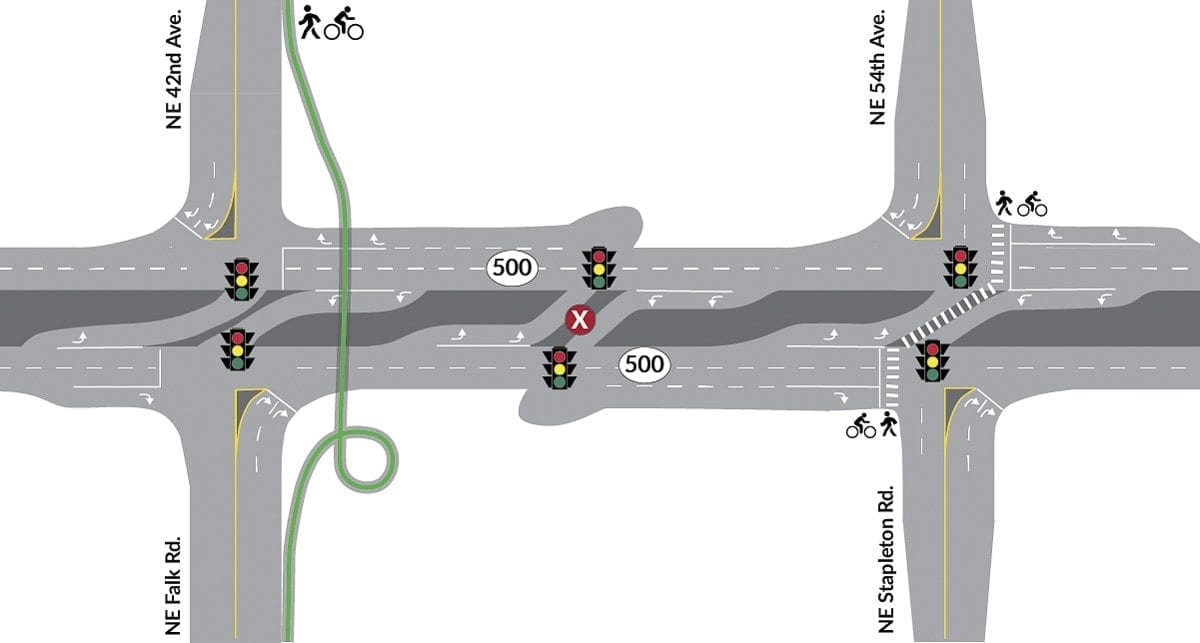Agency holds open house to answer questions, collect feedback on plans that could drastically alter safety and travel times for Clark County drivers
VANCOUVER — The problems with traffic on State Route 500 were plain to see for all who attended a Washington State Department of Transportation (WSDOT) open house focused on potential remedies at Roosevelt Elementary Thursday afternoon.
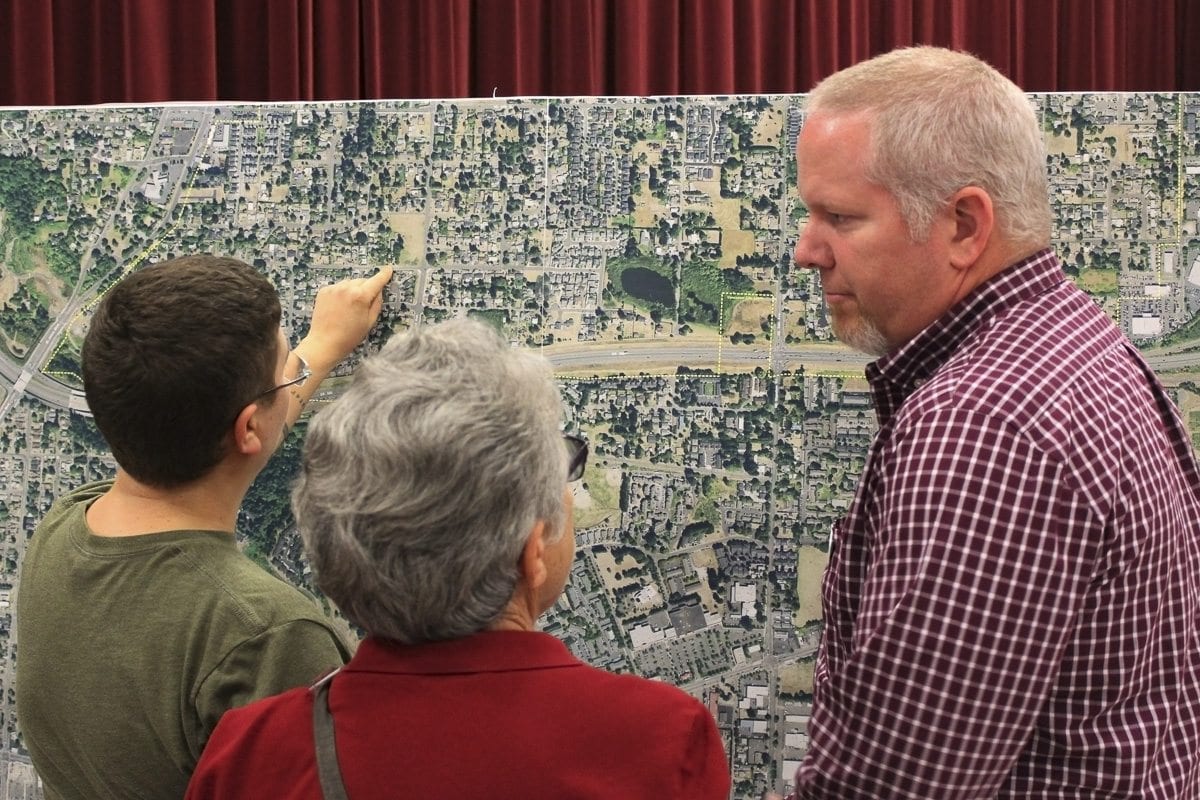
The route to the school, where WSDOT officials were on hand to explain concepts to alleviate congestion while continuing to allow for pedestrian and bicycle movement, was filled with motorists traveling between Interstate 5 and Interstate 205 during rush hour. The vehicles would zoom along unimpeded only to come grinding to an abrupt halt at traffic signals between St. Johns Road and Northeast Andresen Road.
The sudden stop-and-go nature and growing use of the stretch of roadway presents obvious problems, but if those aren’t apparent to passersby, WSDOT has data to prove it.
There has been a 30 percent increase in use of the roadway over the past 10 years.
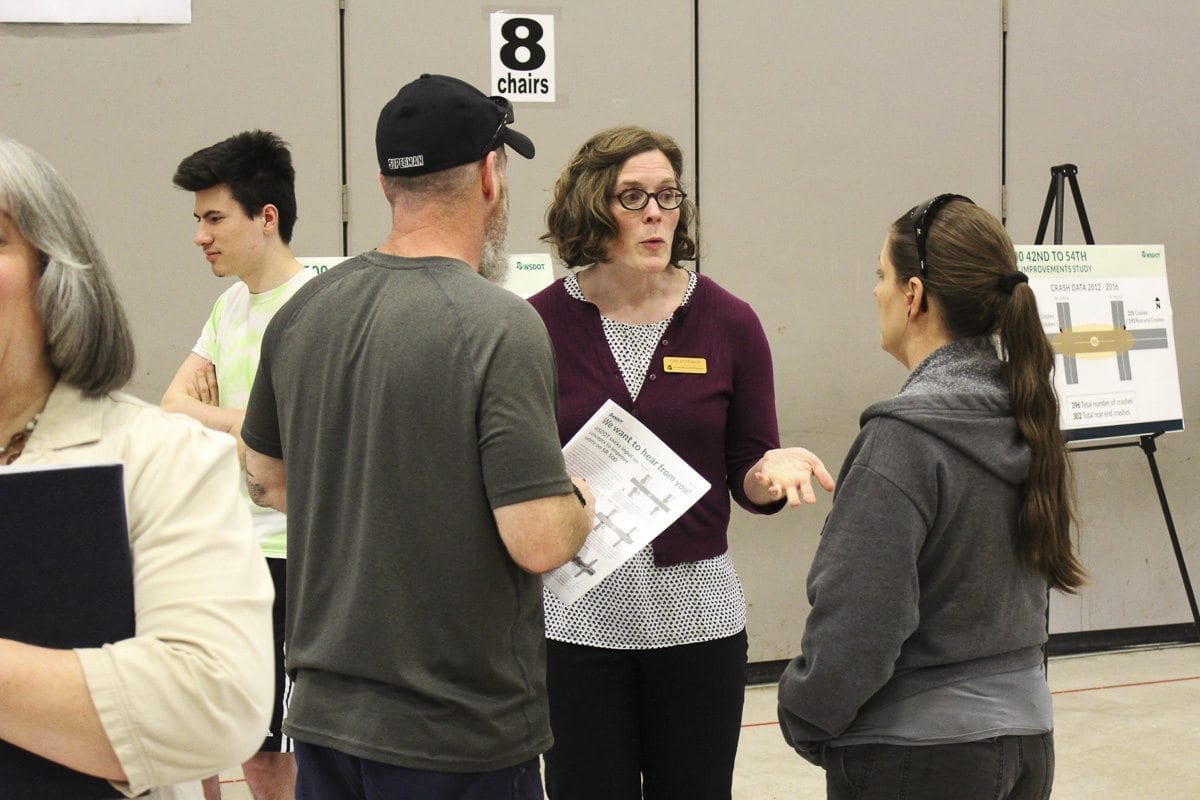
Meanwhile, between 2012 and 2016 there were 396 crashes at the Northeast 54th Avenue and Northeast 42nd Avenue intersections. There were 161 crashes at the 42nd Avenue signal, with 109 being rear-end collisions. There were 295 crashes at 54th Avenue signal, 193 being rear-end collisions.
The safety issues along the corridor were urgent enough for WSDOT to dedicate funding set aside for safety projects in order to evaluate the problem and potential solutions.
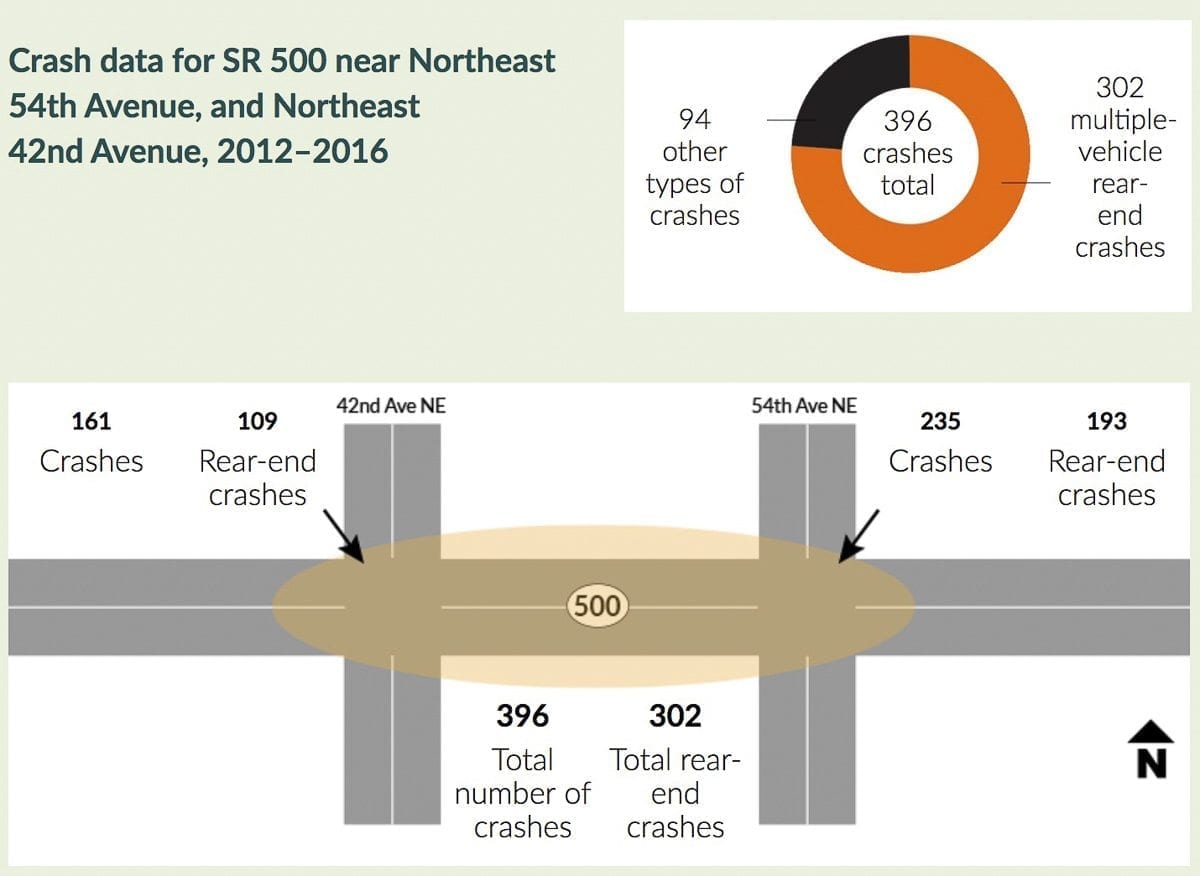
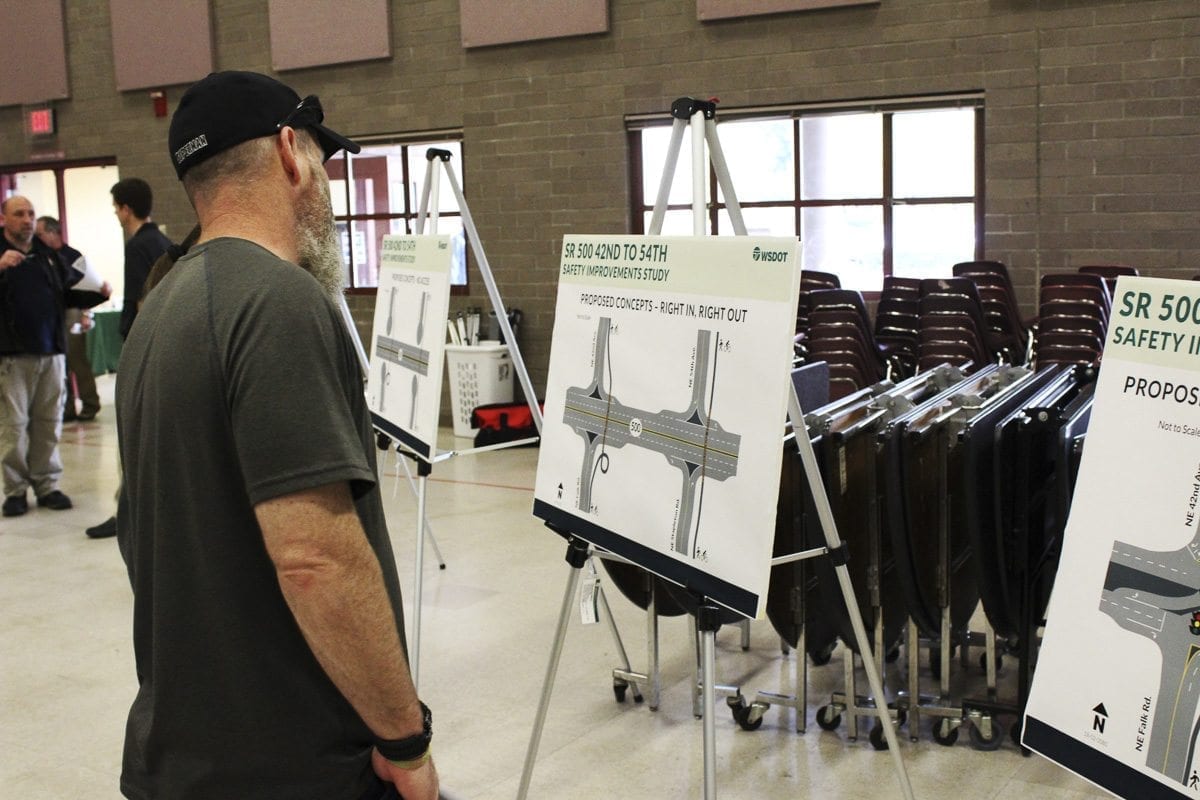
On Thursday, officials presented three concepts that all aim to improve the flow of traffic and thereby reduce the number of fender-benders. They were born from the results of surveying residents and holding stakeholder meetings with area governments and agencies.
“We’re looking to either see if there are options where we can remove the signals, because the signals are a key component of the problem, or to streamline the signals so they work more efficiently, they’re handling fewer movements and they can provide more green time to the movements they do serve,” said WSDOT region planning director Carley Francis.
The concepts are described by the WSDOT as such:
- No Access — Existing signals would be removed. To get on or across State Route 500, drivers would use St. Johns or NE Andresen Road. Pedestrians and bicyclists could cross State Route 500 at both NE 42nd Avenue and NE 54th Avenue. WSDOT estimates this option would reduce crashes by 90 percent and greatly improve traffic times.

Here’s the No Access concept as presented by the WSDOT. Image provided by WSDOT - Right In, Right Out — Existing signals would be removed and a merge lane would be added. Only right turns would be possible at both locations. To get across State Route 500 or to take a left, drivers would U-turn at St. Johns or NE Andresen Road or take local streets. Pedestrians and bicyclists could cross State Route 500 at both NE 42nd Avenue and NE 54th Avenue. WSDOT estimates this option would reduce crashes by 70 percent and eliminate all conflicts involving left turns. It would also reduce travel times significantly with the loss of the two traffic signals.

This is the current traffic layout in the area of focus. Image provided by the WSDOT - Restricted Crossing U-Turn — Redistribute current turning movements. Left and right turns from State Route 500 would be allowed. To get across State Route 500 or turn left onto State Route 500, drivers would turn right and U-turn at a new light, St. Johns or Andresen Road. Pedestrians and bicyclists could cross State Route 500 at both NE 42nd Avenue and NE 54th Avenue. According to the WSDOT, this option would reduce crashes by 45 percent and traffic delays by 70 percent.

This is the Restricted Crossing U-Turn design. Image provided by the WSDOT
The three concepts range in cost from $3 million to $6 million.
The first two concepts — No Access and Right In, Right Out — are fairly simply to understand as the titles adequately describe the aim.
The third concept, Restricted Crossing U-Turn, requires a bit more explanation, which is why WSDOT officials on hand Thursday encouraged residents to visit the online open house on the WSDOT website in order to see the potential traffic movements and alterations for themselves.
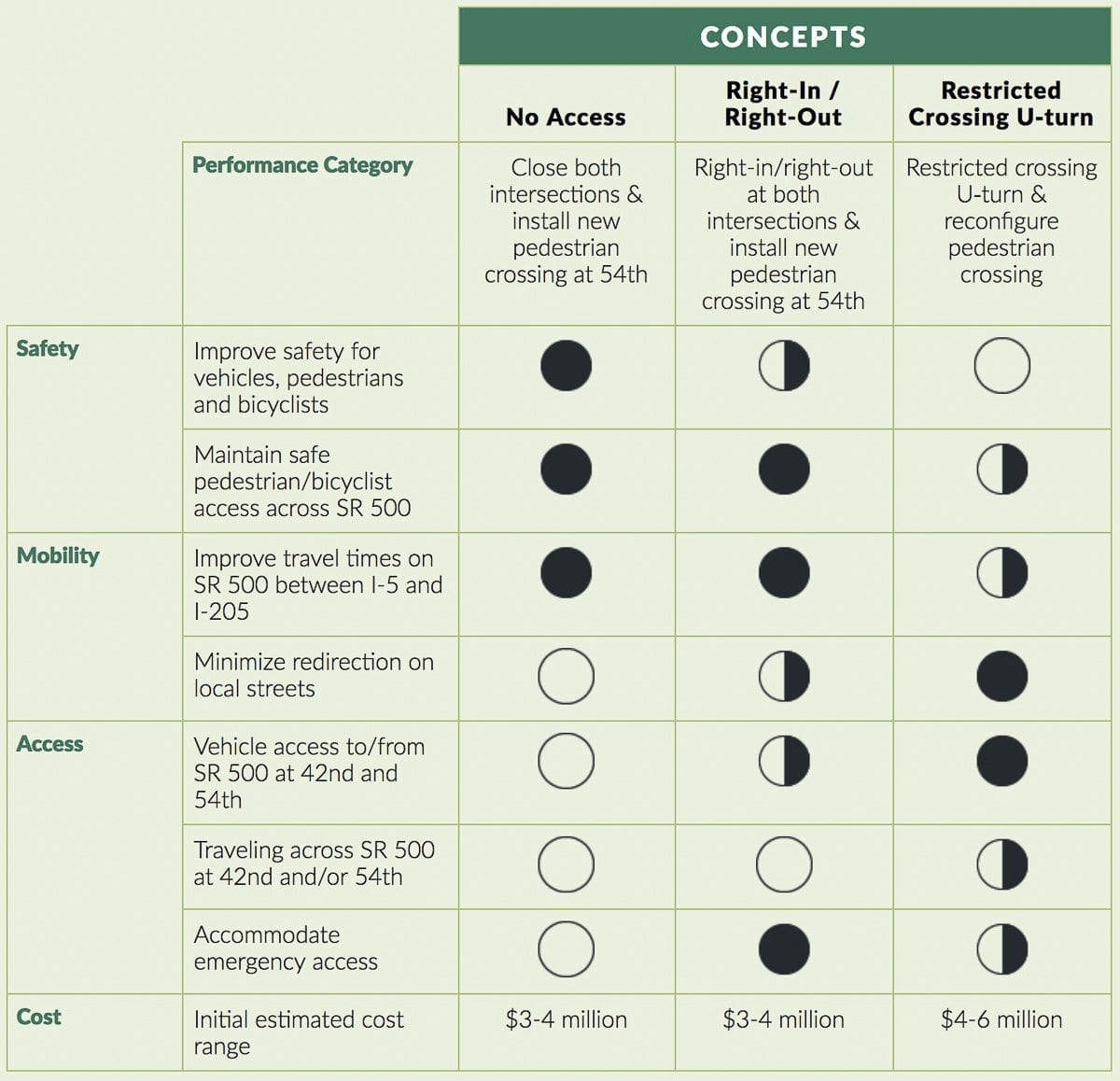
“The best way I’ve found to conceptualize that is that each side of the highway works as a one way in that traffic eastbound could be going eastbound while westbound stops,” said WSDOT communications spokeswoman Tamara Greenwell. “Because of the divider, you’re able to manage traffic as two one ways as opposed to what it is now, which is when traffic stops, traffic stops.”
The No Access concept drew the ire and questioning of some local residents who asked how they’d access State Route 500 and their neighborhoods if their roads are essentially turned into cul de sacs with the elimination of traffic signals.
Others expressed confusion with the third concept, Restricted Crossing U-turn, lamenting that such changes would be confusing and overly complex.
A handful of open house attendees who spoke with ClarkCountyToday.com after leaving the event were all in favor of the second concept — Right In, Right Out — though even that option had them clamoring amongst themselves about potential pitfalls.

Francis said it’s important to remember nothing is final and WSDOT has no preferred alternative. Attendees of the open house are in fact assisting WSDOT by providing their input and opinions.
“These all have safety benefits,” she said of the concepts. “They all also, by streamlining or removing signals, have a travel time benefit. But they have costs too, so we understand that there are different ways in which they benefit some people while other people will see a disbenefit. So we really want to understand how people see that. We want to know if they think there’s something we’re missing or not considering.”

Francis says the input of open house attendees will be compiled and analyzed in the weeks ahead with the goal of presenting the public with a preferred option as early as this summer, though the timeline is far from certain.
Likewise, there isn’t funding for a project currently, though the conceptual stage is necessary to reach that point of the process, Francis noted.
She said she understands opinions are mixed. WSDOT officials hope to clear some uncertainty as they continue to accept comments from the public while working to address the concerns of local governments and stakeholders.
“We’ve heard folks are interested in local trip diversion, obviously,” Francis said. “And they have different opinions about that. Some folks are concerned about safety and what that might do to local streets. We’re in conversations with the city of Vancouver and Clark County to talk with them about concerns that are existing as well.”
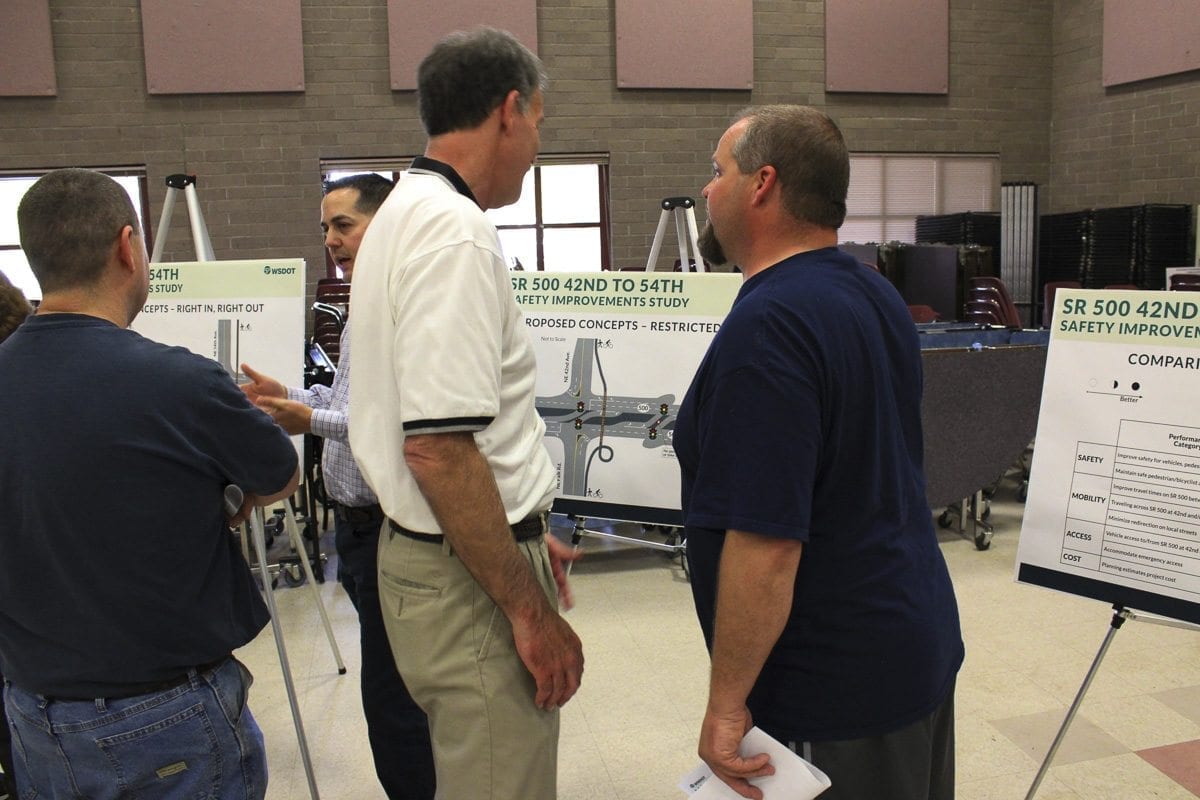
Through May 25, an online open house will be available at http://sr500safety.infocommunity.org/en/. Participants are encouraged to submit their comments on the concepts as the WSDOT continues to pursue a solution.
“Their input is important,” Greenwell said. “We don’t know everything, even if folks sometimes think that we think we do. We don’t.”






